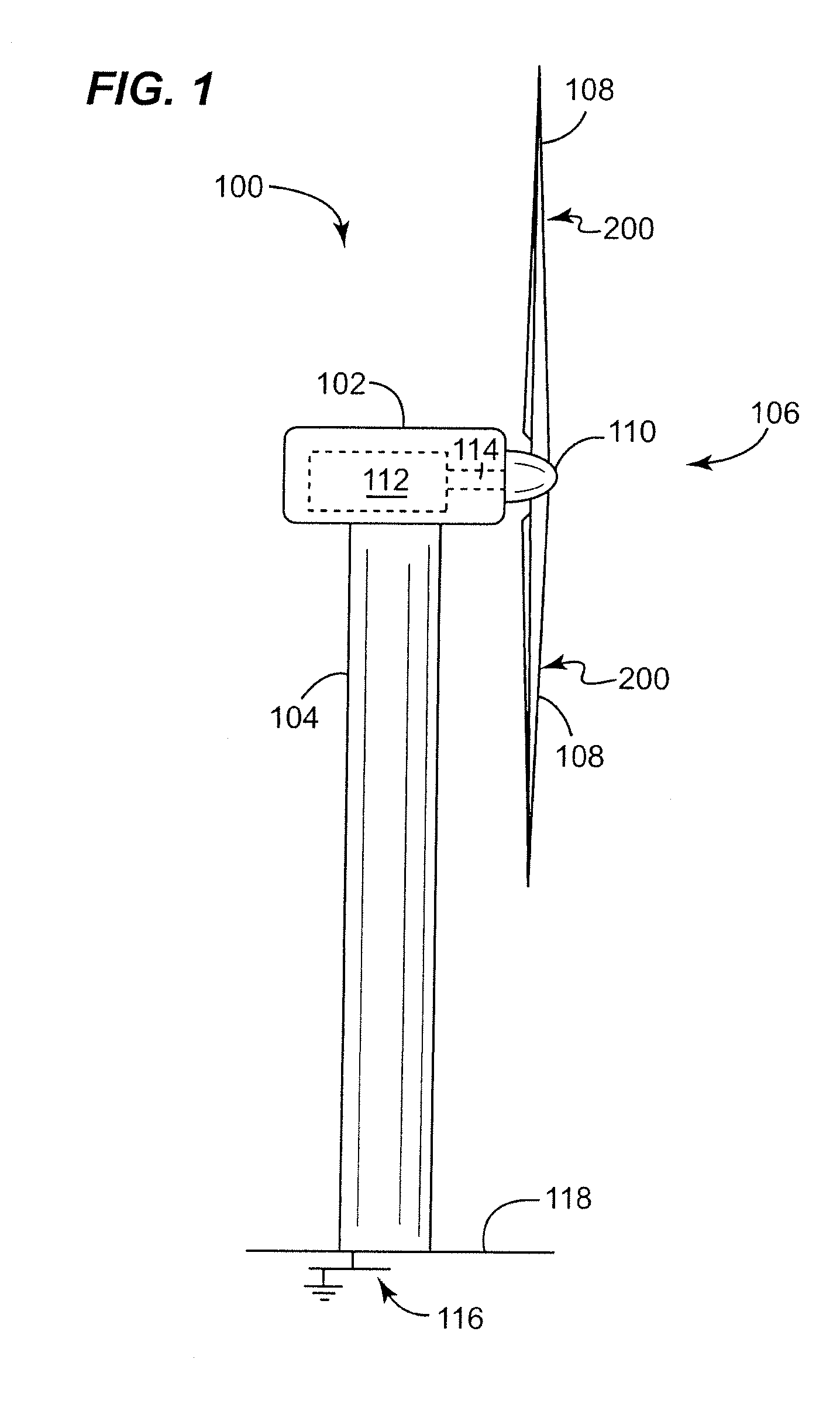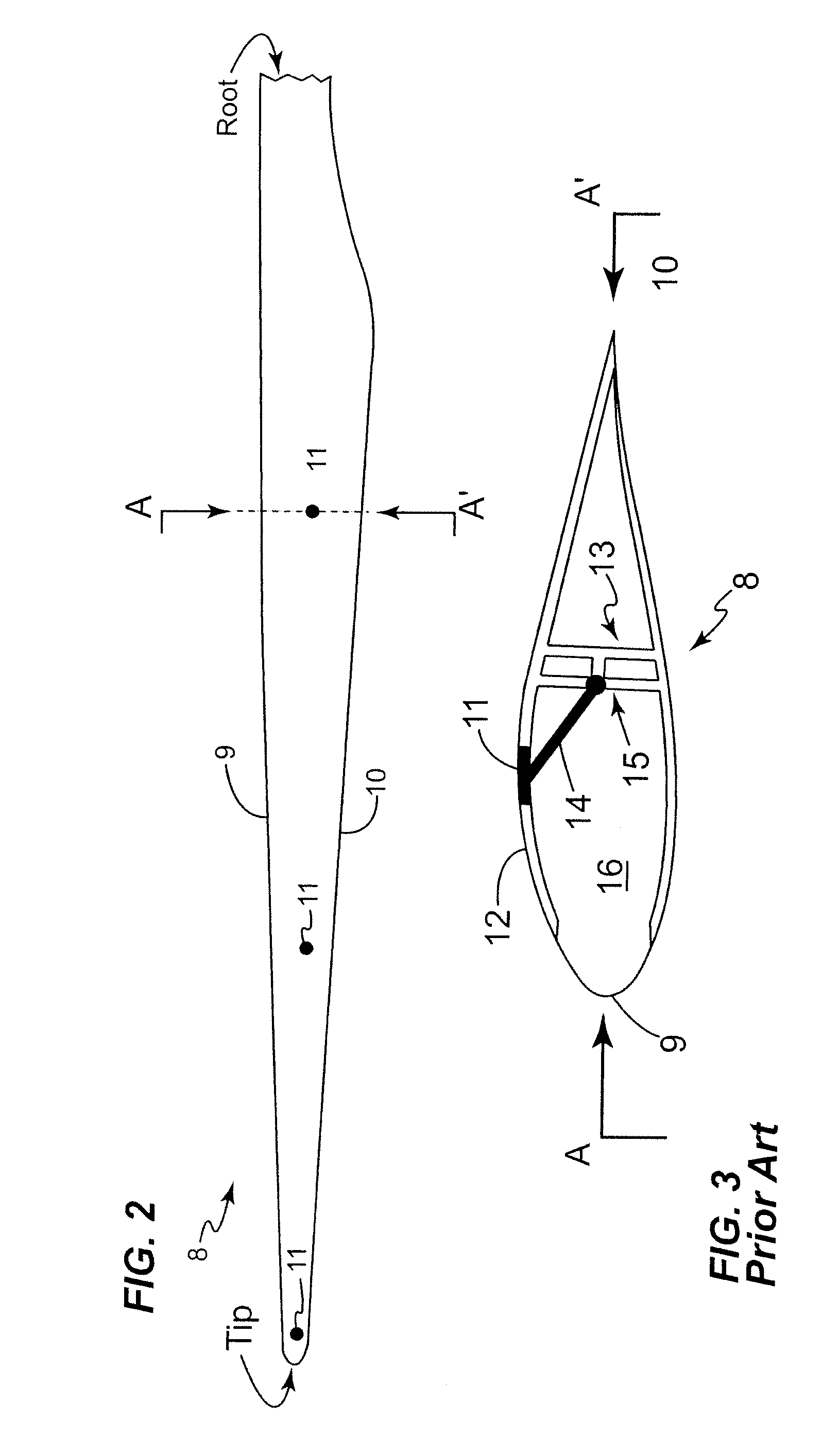Wind turbine protection
a wind turbine and protection technology, applied in the field of wind turbine protection, can solve the problems of multiple punctures (or stitching) of the blade surface, high incidence of thunder storms, and damage to the blade often, and achieve the effect of improving supply reliability
- Summary
- Abstract
- Description
- Claims
- Application Information
AI Technical Summary
Benefits of technology
Problems solved by technology
Method used
Image
Examples
Embodiment Construction
[0032]FIG. 1 shows an embodiment of a wind turbine 100 according to the present invention. The wind turbine 100 includes a nacelle 102, a tower 104, and a rotor 106 having at least one rotor blade 108 and a rotateable hub 110. The nacelle 102 is mounted on the tower 104 and also houses an electrical generator 112. Rotor blades 108 are attached to the hub 110 and rotate the hub 110 when there is sufficient wind strength to move the blades 108. The hub 110 is mechanically coupled to the generator 112 by a coupling mechanism 114, which may comprise a gear mechanism (not shown), such that rotation of the hub 110 causes operation of the electrical generator 112 to generate electricity.
[0033]The structure of the tower 104 comprises a lightning conductor or down-conductor (not shown for clarity) for electrically coupling to a ground potential at a first end thereof. The first end of the lightning conductor is connected to an earth potential via an earth / ground plate 116 embedded in soil 11...
PUM
 Login to View More
Login to View More Abstract
Description
Claims
Application Information
 Login to View More
Login to View More - R&D
- Intellectual Property
- Life Sciences
- Materials
- Tech Scout
- Unparalleled Data Quality
- Higher Quality Content
- 60% Fewer Hallucinations
Browse by: Latest US Patents, China's latest patents, Technical Efficacy Thesaurus, Application Domain, Technology Topic, Popular Technical Reports.
© 2025 PatSnap. All rights reserved.Legal|Privacy policy|Modern Slavery Act Transparency Statement|Sitemap|About US| Contact US: help@patsnap.com



